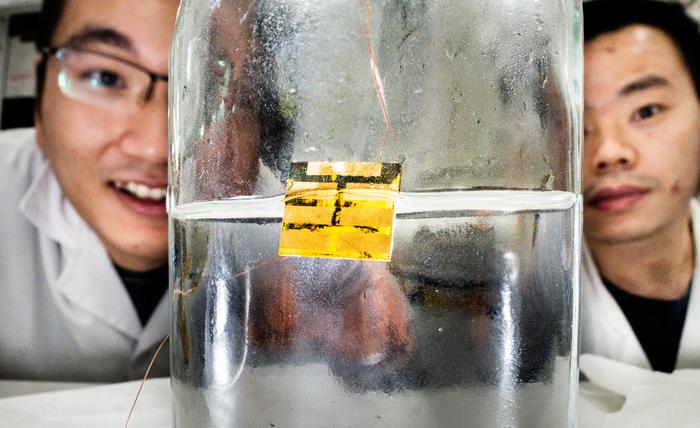World News14.02.2025
Scientists develop fully recyclable next-generation solar cell

QAZAQ GREEN. Researchers at Linköping University have developed a groundbreaking method to recycle all components of perovskite solar cells without using harmful solvents. This innovation, recently published in Nature, allows solar cells to be recycled multiple times while maintaining the same efficiency as the original, according to EurekAlert.
As global electricity demand surges due to AI advancements and the shift to electric transport, the need for sustainable energy sources has become more urgent. Solar power has long been a promising solution, but traditional silicon-based panels, which have dominated the market for over 30 years, are now reaching the end of their lifecycle. This has created a growing environmental issue, as there is currently no effective way to manage the waste from old silicon panels, leading to massive amounts of electronic waste.
“We need to consider recycling when developing new solar technologies,” says Feng Gao, professor of optoelectronics at Linköping University. “If we don’t know how to recycle them, maybe we shouldn’t put them on the market at all.”
Perovskite solar cells, seen as a key next-generation technology, offer several advantages: they are lightweight, flexible, transparent, and relatively inexpensive to produce. They can be installed on a variety of surfaces, including windows, and can achieve energy conversion efficiencies comparable to traditional silicon panels. However, their shorter lifespan and small lead content make efficient and sustainable recycling methods essential.
Current recycling processes rely on dimethylformamide, a toxic and potentially carcinogenic solvent. The Linköping research team has instead developed a water-based method that allows perovskite materials to be extracted and reused without compromising performance.
“We can recycle everything – glass covers, electrodes, perovskite layers, and the charge transport layer,” says Xun Xiao, a postdoctoral researcher at Linköping University.
With many countries implementing regulations requiring solar panel recycling, this breakthrough could pave the way for a more sustainable solar industry. The researchers now aim to scale up their method for industrial use, potentially making perovskite solar cells a major contributor to the future of renewable energy.
Trump signs executive order to end subsidies for wind and solar energy
Uzbekistan's solar and wind power plants generate 5 Billion kWh since beginning of the year
Green Corridor Alliance JV registered in Baku to promote green energy development in Central Asia and the South Caucasus
In the EU renewable energy supply grew by 3.4% in 2024
IRENA accepting renewable energy project proposals in Central Asia until August 15
Astana to host Electronica Expo Kazakhstan Electronics Exhibition
WB gives rundown of Azerbaijan's green energy grid volume prospects
US solar sets new records as renewables nearly match natural gas – EIA
‘Wings’ on poles: Bill Gates-backed breakthrough wind turbine facility breaks ground
Perovskite tandem solar cell achieves new efficiency record
Kazakhstan and China endorse draft SCO joint statement on sustainable energy development
Innovative research on organic solar cells for space applications
Kazakhstan and Uzbekistan drive green energy progress in Central Asia
KazMunayGas launches pilot green hydrogen project in Atyrau
How private homeowners in Kazakhstan can make money from solar panels
14 countries are investing in Kazakhstan's renewable energy sector through auctions
How green hydrogen could transform Kazakhstan’s energy sector
IKEA offers ready-to-use solar power systems for balconies
Adani commissions India’s first off-grid green hydrogen pilot plant
Tajikistan unveils green energy roadmap at international conference in Dushanbe











